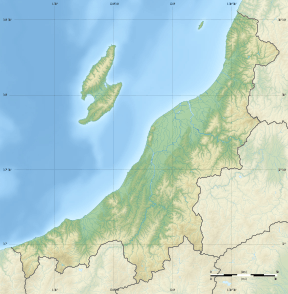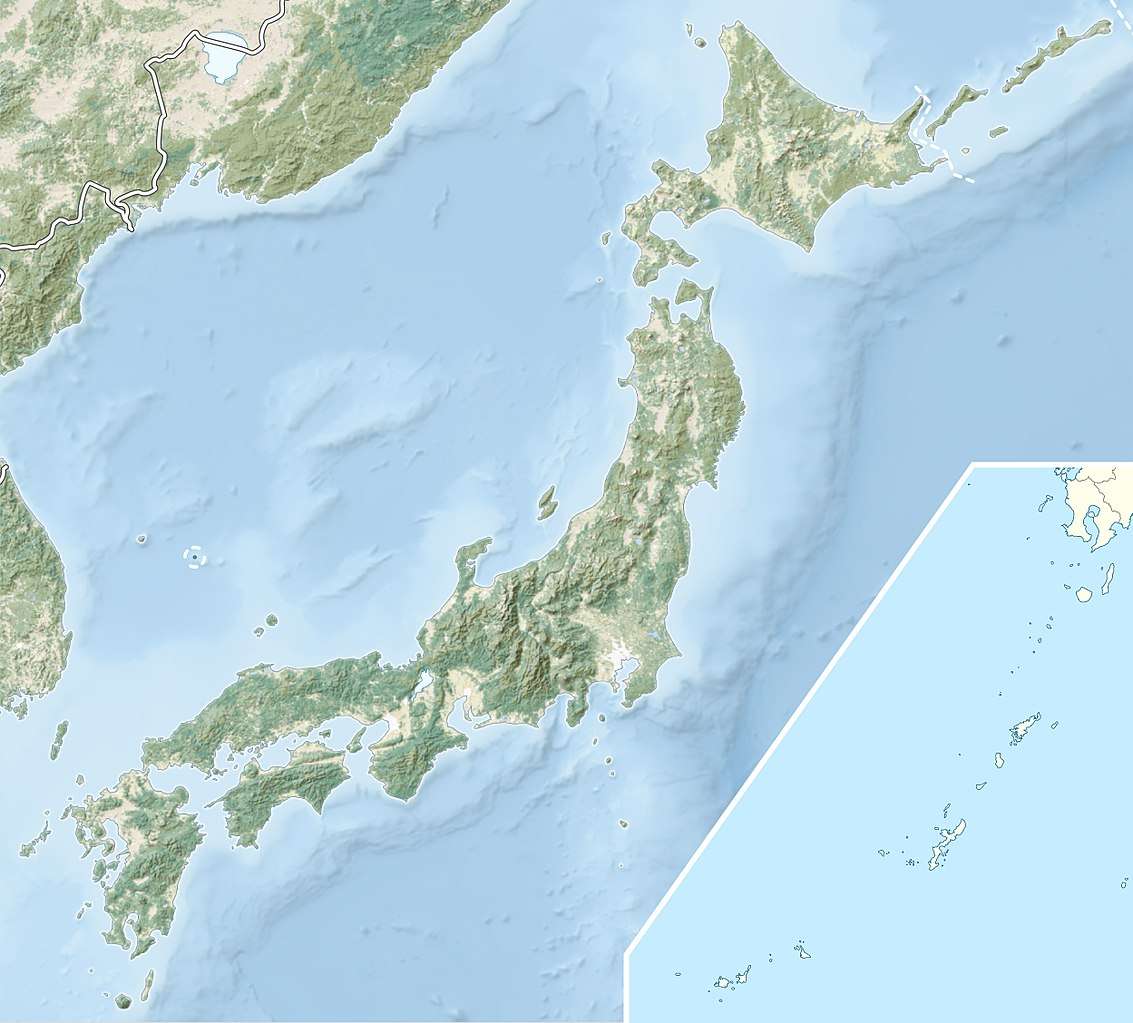Kosegasawa Cave
Kosegasawa Cave (小瀬ヶ沢洞窟, Kosegasawa dōkutsu) is a Jōmon period archaeological site consisting of a cave dwelling in what is now part of the town of Aga, Niigata Prefecture in the Hokuriku region of Japan. The site was designated a National Historic Site of Japan in 1982.[1]
小瀬ヶ沢洞窟 | |
 Kosegasawa Cave  Kosegasawa Cave (Japan) | |
| Location | Aga, Niigata, Japan |
|---|---|
| Region | Hokuriku region |
| Coordinates | 37°35′32″N 139°24′18″E |
| Type | settlement |
| History | |
| Periods | early Jōmon |
| Site notes | |
| Ownership | National Historic Site |
| Public access | Yes |
Overview
The cave is located in the upstream part of the Muroya River, a branch of the Jinna River, and was formed by erosion of a rhyolite outcrop on the river's left bank at an altitude of 200 meters. The cave is approximately 1.5 meters in width and extends for seven meters into the mountain. The interior was excavated from 1958 to 1959, during which time numerous examples of pottery from the earliest stage of the Jōmon Period and the stone tools and hunting implements were discovered. The stone tools included many stripped fragments (stone waste generated during stone tool production), indicating that this site was a production base for such tools. These items are important materials for clarifying the origins of Jomon culture and were designated National Important Cultural Properties in 2000.[2] The artifacts discovered are displayed at the Nagaoka City Science Museum and at the Age Regional History Museum in former Kamikawa village.
References
- "小瀬ヶ沢洞窟" [Kosegasawa dōkutsu] (in Japanese). Agency for Cultural Affairs.
- "新潟県小瀬ケ沢洞窟遺跡出土品" [Niigata Prefecture Kosegasawa Cave Site Excavated Artefacts] (in Japanese). Agency for Cultural Affairs.
External links
- Aga town home page (in Japanese)